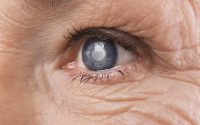23 Reasons Your Skin Is So Freaking Red And What To Do About It
Maybe you woke up with a mysterious rash. Maybe you spilled something on yourself and now your skin is not happy. Or maybe some other bumpy, itchy, swollen patch of skin has urged you to Google: “Why is my skin so red?” Whatever the reason, you don’t have to search too much further for answers.
Here are the most common reasons why your skin might be flaring up and taking on a reddish color and what to do about each one, with input from Chris Adigun, MD, a dermatologist in North Carolina. Plus, the photos ahead associated with each issue can help you identify and describe your red skin issues to your doc, so that you can get a proper and accurate diagnosis.
Shingles
If you’ve had chickenpox, the shingles virus is already inside your body. If the virus becomes reactivated, it can cause painful, red patches on your skin. In addition to the painful rash, you may experience fluid-filled blisters, fever, headache, sensitivity to light, or fatigue.
Call a doctor immediately if you suspect you might have shingles, as they will need to prescribe you antiviral medication to kick the virus and help you heal. In the meantime, if you do receive a shingles diagnosis, over-the-counter pain meds can help with the discomfort. As you might guess, any skin redness associated with the shingles rash will go away when the virus does.
https://www.instagram.com/p/B5h8bIGDXpM/
Ringworm
If your red spot looks circular, it could be ringworm. Ringworm is a fungal infection that presents as a red, itchy, circular rash.
With this infection, the itchy ring is typically the only symptom. But if you do see a suspicious red, round rash that doesn’t go away, get in touch with your doc because you’ll need topical treatment to get rid of it.
https://www.instagram.com/p/ByL7RKalD0p/
Psoriasis
Psoriasis is a common skin condition—shoutout to Kim K for normalizing it—that causes skin cells to build up. The extra skin cells form itchy, red patches. In addition to red, patchy skin, you may have joint pain or pitted or thickened nails. While there’s no cure for psoriasis, a doctor can help you manage the symptoms.
https://www.instagram.com/p/B6z33ETlwud/
Heat Rash
While it’s more common to see heat rash on babies, adults sometimes have it, too. It happens when blocked pores trap sweat underneath your skin, causing lots of red bumps. Usually, these bumps show up in skin folds or where your clothing causes friction. Look for heat rash on your neck, shoulders, chest, armpits, elbow creases, and groin. Heat rash typically takes care of itself, but you should consult a doctor if the bumps don’t disappear after a few days.
https://www.instagram.com/p/B4e5LZhi5e-/
Bites and stings
No surprise here: Lots of different bites and stings can cause angry, red bumps. Bites and stings can come from spiders, ants, bees, jellyfish, sea lice, ticks, fleas and many other types of insects and animals. Most of the time, a bite or sting causes a mild reaction that goes away on its own. But, sometimes, they can get infected. If the bite or sting gets too swollen or causes an allergic reaction—making it difficult to breathe or causing dizziness and nausea—get help.
https://www.instagram.com/p/B4qp1dtD2Js/
Skin infection
Skin infections can come from bacteria, viruses, fungi, or parasites, which means flare ups can look quite different depending on the cause. Some infections are surface level, while others go deep into the tissue. Depending on the type of infection you have, you could experience rashes, swelling, pain, pus, and/or itching. Some infections will go away on their own or with an over-the-counter cream or lotion while others will need medical treatment, so see your doc to figure out what’s going on.
https://www.instagram.com/p/B3u_qtynmr3/
Bone infection
Also known as osteomyelitis, bone infections can cause red skin above where the bone is infected. Sometimes the infection starts in the bone, but it can also travel there via the bloodstream or tissue. If you do have a bone infection, in addition to red skin you can expect fever and pain, and swelling, warmth, and pain in the infected area.
https://www.instagram.com/p/B2urWTsH7GP/
Thrombophlebitis
If you have thrombophlebitis, you’ll see not only redness, but also a large lump—usually on your leg. This type of inflammation causes blood clots to clog a vein. Other than redness, you’ll experience pain, swelling, warmth, and tenderness. If you have a swollen vein, see a doctor right away.
https://www.instagram.com/p/B3NbzYLjj_3/
Angiodema
Angiodema is swelling underneath the skin, sometimes connected with hives. Often, swelling from angiodema is around your face or lips. Usually, angiodema clears up on its own, but check with a doctor if the swelling lasts more than a few days.
https://www.instagram.com/p/BhbSN6tA6s0/
Scarlet fever
If you’ve recently had strep throat, watch out for scarlet fever; it can develop from the same bacteria (though it’s most common in children). Look for a red, bumpy rash, strawberry-colored tongue, flushed face, fever, sore throat, and red lines in the folds of skin around the armpits, knees, neck, groin, and elbows. Call a doctor right away if you suspect scarlet fever.
https://www.instagram.com/p/B3dqxyQBuYE/
Cellutitis
Cellutitis is a specific type of skin infection caused by bacteria. Infected skin is typically very red, swollen, tender, warm and painful to the touch. If the infection is left untreated it can spread throughout your body and quickly become life-threatening. Get to a doctor if you have a red, swollen rash that spreads quickly, accompanied by a fever.
https://www.instagram.com/p/B6AFQhYHXB9/
Drug allergy
Hours, days, or weeks after taking a new medication, you might find a red, bumpy rash. Any medication, whether over-the-counter or prescription, can cause an allergic reaction like this. Some drug allergies can be serious and make it difficult to breathe. If you have any trouble breathing, call your doctor. Even with mild reactions, it’s important to see your doctor and figure out a new medication you can take instead.
https://www.instagram.com/p/BIP20D3Dki5/
Chemical burn
From DIY projects to cleaning hacks, there are lots of ways you might accidentally get a chemical burn. Usually, it’s pretty obvious what caused the burn. Whichever body part you spilled chemicals on or submerged in chemicals will become red and painful. If the burn is minor enough, you can treat it by yourself. Mayo Clinic suggests flushing the wound with cool water for at least 10 minutes and bandaging it loosely in a clean cloth. However, if the burn is bigger than three inches or is deep, it’s best to go to urgent care.
https://www.instagram.com/p/B65-J0vDbNL/
Contact dermatitis
If something weird is going on with your skin, the first question you get is often, “Did you switch soaps recently?” Soaps, cosmetics, fragrances, jewelry, and sometimes even plants can cause a reaction called contact dermatitis, which is essentially a red, itchy rash caused by direct contact with the allergen. See your doctor if the rash is interfering with your sleep, if it’s painful and widespread, and if it doesn’t get better within three weeks.
https://www.instagram.com/p/B6Uyv2sFYKz/
Burns
No big shock here: Burns can cause red skin. Depending on how severe the burn is, you may or may not need medical treatment. First-degree burns are minor and can be treated at home because they only affect the top layer of skin. Second and third-degree burns, however, go deeper and will probably need a doctor’s attention to avoid infection and scarring.
https://www.instagram.com/p/BjG_aj8nGV9/
Eczema
Eczema, also known as atopic dermatitis, is a skin condition that causes red and itchy bumps. There is no cure for eczema, but a dermatologist can help you manage your symptoms.
https://www.instagram.com/p/B6_lOlUnQjl/
Diaper rash
Babies have sensitive skin and diapers chafe, especially if they’re wet, leading to a red rash that’s super common. The red skin on your baby’s butt will clear up easily after you dry their skin and apply some over-the-counter ointment.
https://www.instagram.com/p/B5Z5L0hllAG/
Rosacea
Rosacea is a chronic inflammatory skin disease that mostly causes redness in the face and noticeable blood vessels. Symptoms of rosacea also include: skin sensitivity, flushing, and acne-like pimples. Make an appointment with a dermatologist if flushing or sensitivity becomes intolerable. Your doctor can prescribe treatments for pustules associated with rosacea.
https://www.instagram.com/p/B6cyk-4B1h1/
Sunburn
We all know a sunburn can cause red skin immediately, but over time, sun damage can cause red vessels and a “ruddy” facial complexion more permanently. A dermatologist can perform light-based or laser treatments to help with facial redness. A series of treatments are often needed to get the redness under control. Wearing sunscreen can help prevent further damage.
https://www.instagram.com/p/Bk1D9vYnSEl/
Perioral dermatitis
Perioral dermatitis presents as a bumpy, red rash around the mouth, nose, or eyes. The rash can burn, sting, or be itchy and often occurs after a trigger such as cold weather, use of topical steroids on the face, or new cosmetic products. See a doctor if you have new red bumps or a rash with skin sensitivity after trying a new makeup or face products that persist for two or more weeks.
https://www.instagram.com/p/B2eoIEyHOVh/
Seborrheic dermatitis
Seborrheic dermatitis actually starts as “cradle cap”—patchy and scaly skin on the top of the head—in babies. Some of us never grow out of it, Dr. Adigun says. In adults, seborrheic dermatitis presents with redness and greasy-yellow scales on the face. See a doctor if you have uncontrollable dandruff or if you suspect your skin is infected.
https://www.instagram.com/p/B69Ns-xBw4_/
How do I know when I should get medical help for my skin redness?
There are so many different reasons you might have red skin, which means it can be serious or it can be no big deal, says Dr. Adigun. What matters is the other symptoms surrounding the redness. As a rule of thumb, if you have a lot of pain, have a fever, expect you have an infection, or have serious swelling that isn’t going away, check in with your doctor or a dermatologist. They can help you get the meds you need to calm your skin or offer options for relief from your symptoms.
Source: Read Full Article


